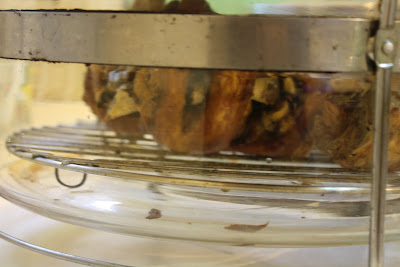First, Zac Sarian sets on my plate this extra large, over riped duhat? Oversized black olive?
He said "Pili, eat it". I just know Pili brittles. How? Holding it, it was soft and squishy. You eat the pulp...hmmm...not something I will look for. It has a gas taste for me, like eating gellied kerosene. The nut is now exposed and it is roasted and cracked? Didn't ask...would rather remove the memory of the pulp on my tongue and rewind my tastebuds to my crispy pili honey brittles.
Ok, so they said pili oil commands a high price and 1hectare will be a good profit. But then, am not into wanting to go into processing. Sure you may sell the nuts to the processor, but I like to "farm to end user" work.
Walking around the stalls, I saw this lady selling Pili planting materials. Several people bought them.
Maybe I should have even just a couple of trees. So I can roast some in the farm and crack them. Maybe if we raised and harvested it ourselves, the pride in them will spell the difference.

























